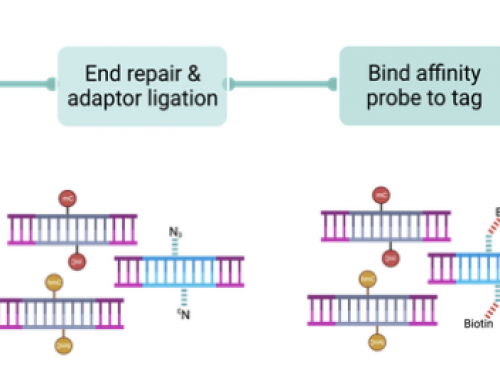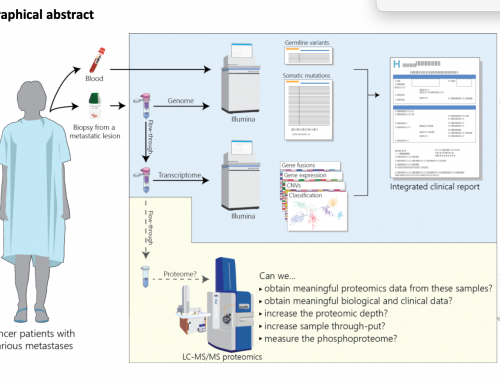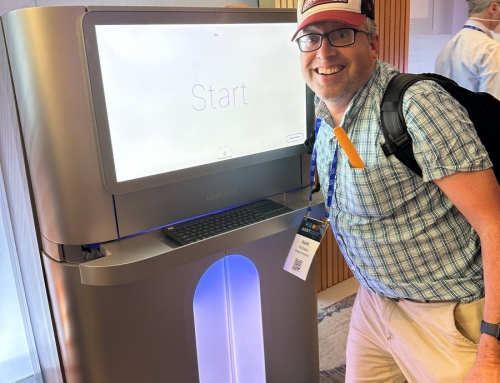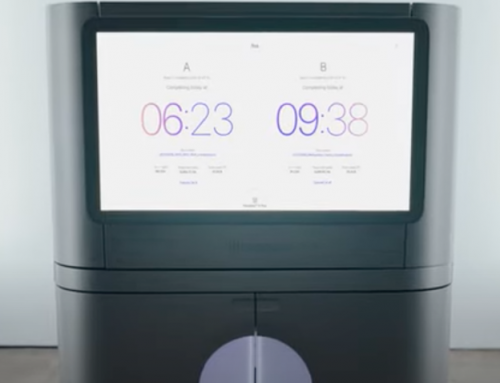An awesome demonstration of what’s possible when people think outside the box: Highly Multiplexed Subcellular RNA Sequencing in Situ in Science this week demonstrates in situ RNA-seq of single cells. FISSEQ (fluorescent in situ RNA sequencing) was developed in the lab of George Church who’s been involved in DNA sequencing for a very long time. Currently the technique is limited to a 30bp read and takes days to complete.
This video is a zoomed in view of primary fibroblasts for 30 sequencing cycles.
If labs like mine are to do this then there is going to be a need for a much more robust system than a dedicated microscope and in GenomeWeb coverage the team confirm they are talking to “undisclosed sequencing firms and hope to develop an automated version of the approach in the coming years”. The coverage also reports that the method could conceivably work with any fluorescent sequencing method, expect an SBS one anytime soon!
Any system is likely to be in direct competition with the spatial transcriptomics described at AGBT by Patrick Stahl CMB, Karolinska Institute: “Spatially Resolved Analysis of Differential Expression within Single Tissue Sections†(my favourite talk of AGBT2014). Microscope slides with barcoded oligo-dT features capture mRNA on the slide directly from tissue; in situ cDNA synthesis generates a barcoded RNA-seq library which is sequencing on HiSeq as normal. Reads are then mapped back to their location and users can interact with the software to select gene for viewing along with their location; e.g. all DE genes in a tumour sample when compared to normal might de-mark tumour more clearly than a pathologist or automated analysis with a single marker. The system currently uses up to 100,000 features but the group are aiming to get to single cell resolution.
The impact of in situ RNA-seq on digital pathology: Imagine a panel of genes, e.g. PAM50 on a slide with multiple genes arrayed in each spot as a multiplex of reverse-transcription primers. The opportunities and likely impact are huge.
Being able to look at known classifiers is great, but if we can apply the tool to the whole transcriptome at single cell levels then this is likely to open up new areas of research for finding classifiers. No need to find high-tumour content samples, simply use whatever is around and let the in situ RNA-seq build a classifier.








James, I suggested to run such test to a NGS expert to no avail. I have a set of tissue microarrays and I showed them that having such tool to assay specific targets in 400 cancer patients will be not only cool but clinically meaningful. Nice to see things are coming out.
[…] Nature Protocols paper by George Church’s group), and imaging-based approaches like MERFISH (see this post). All of these methods are inherently limited because tissue architecture varies on a micro and […]